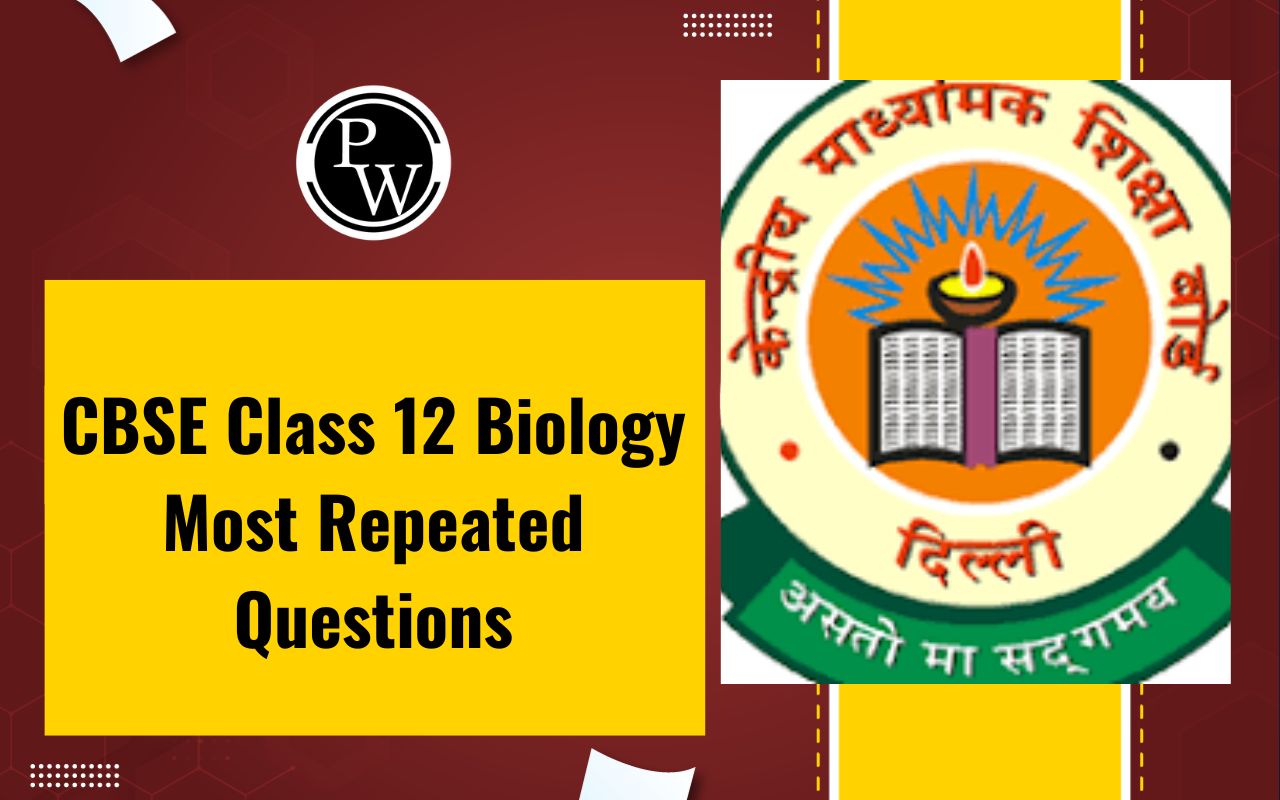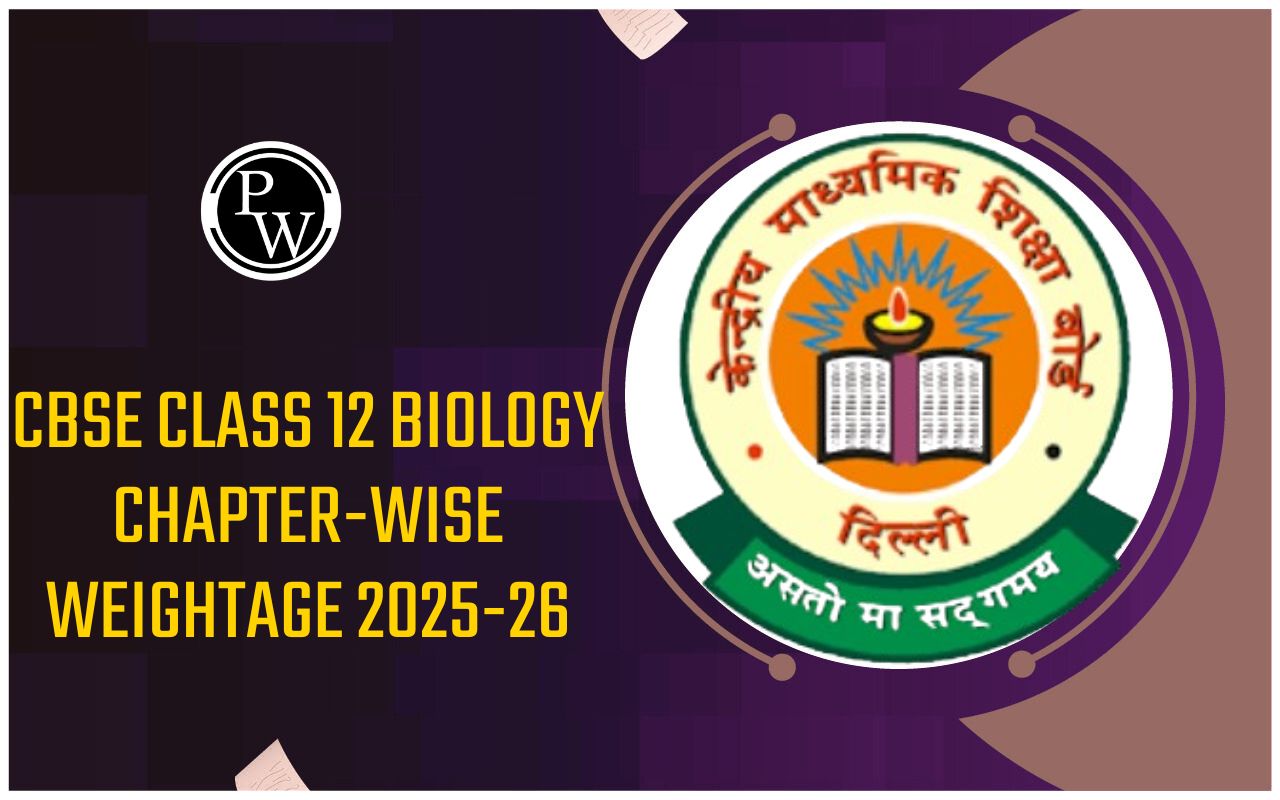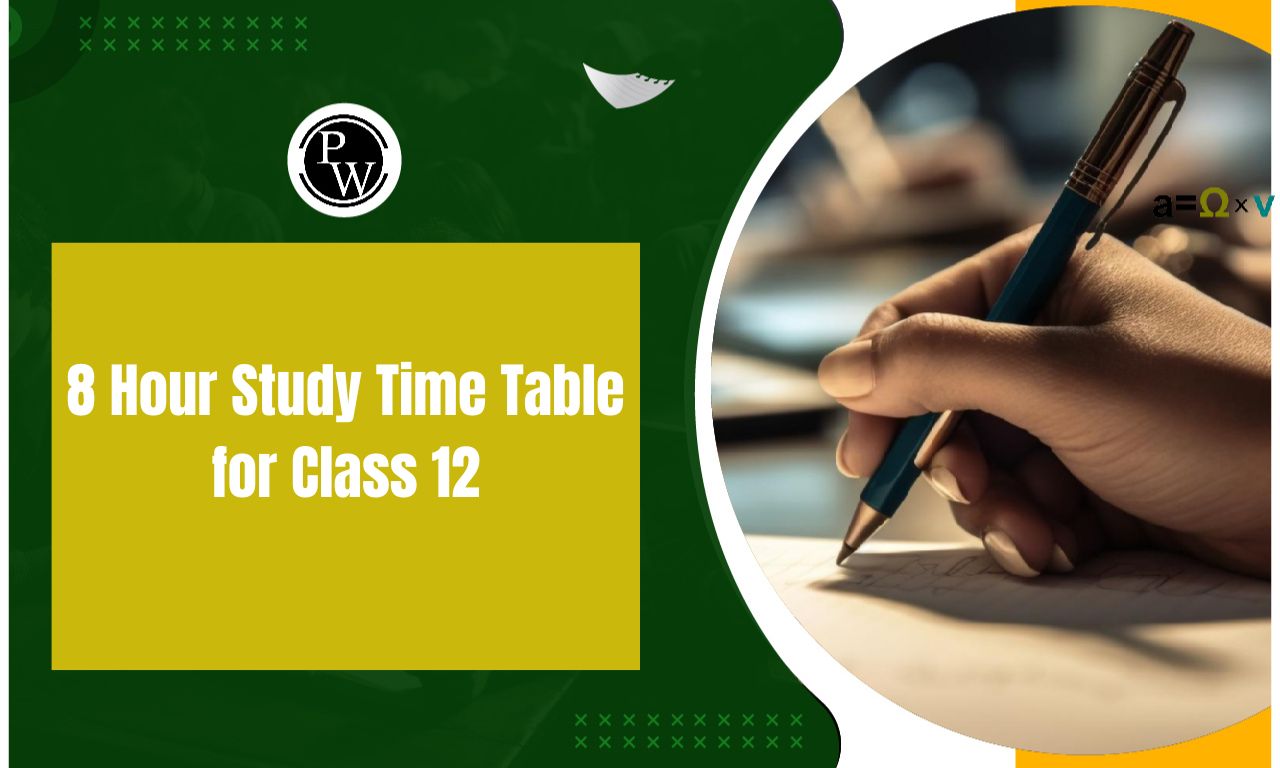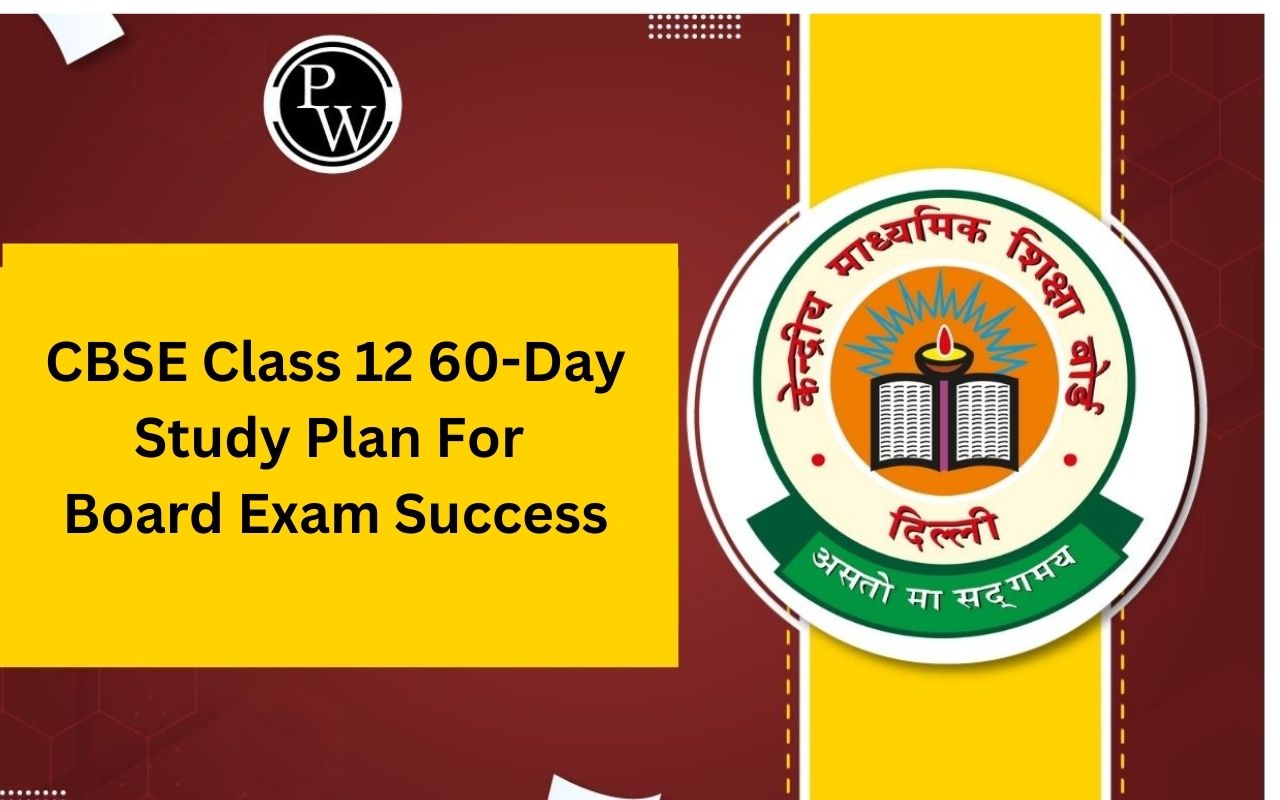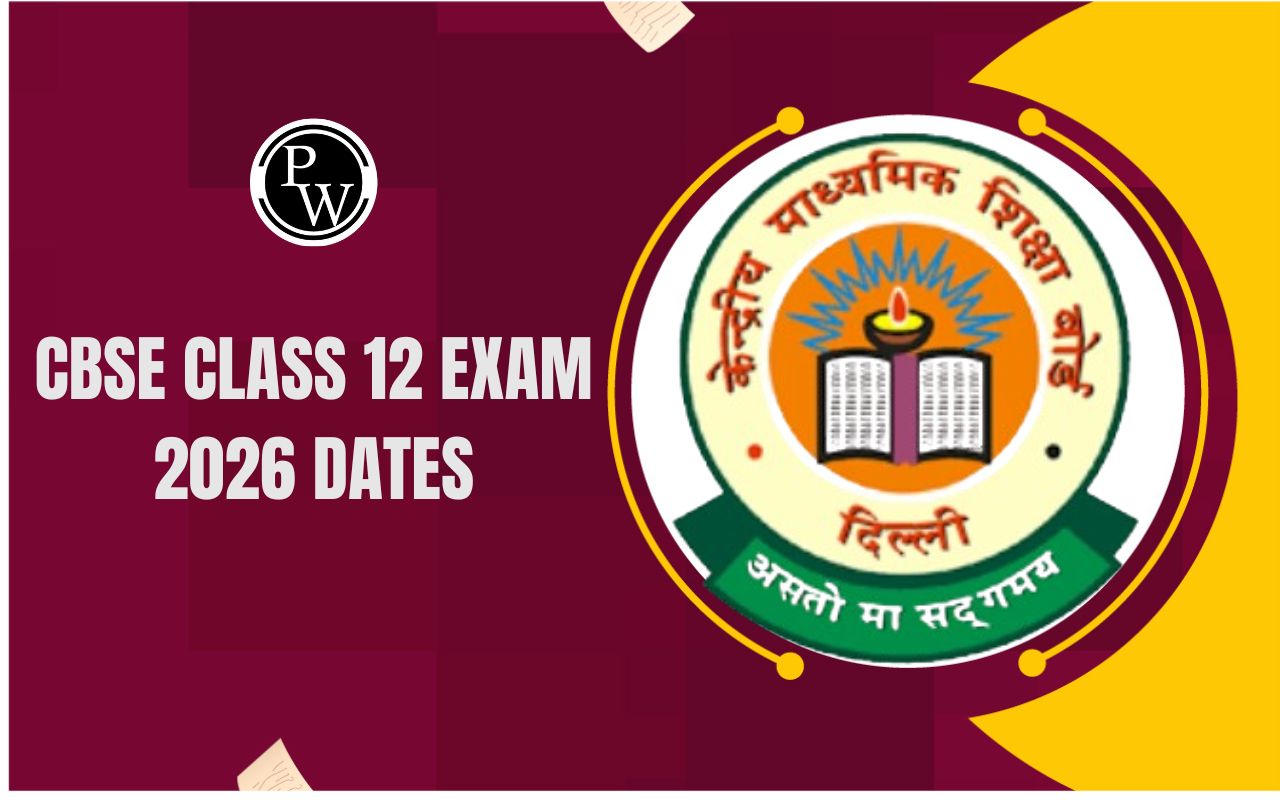
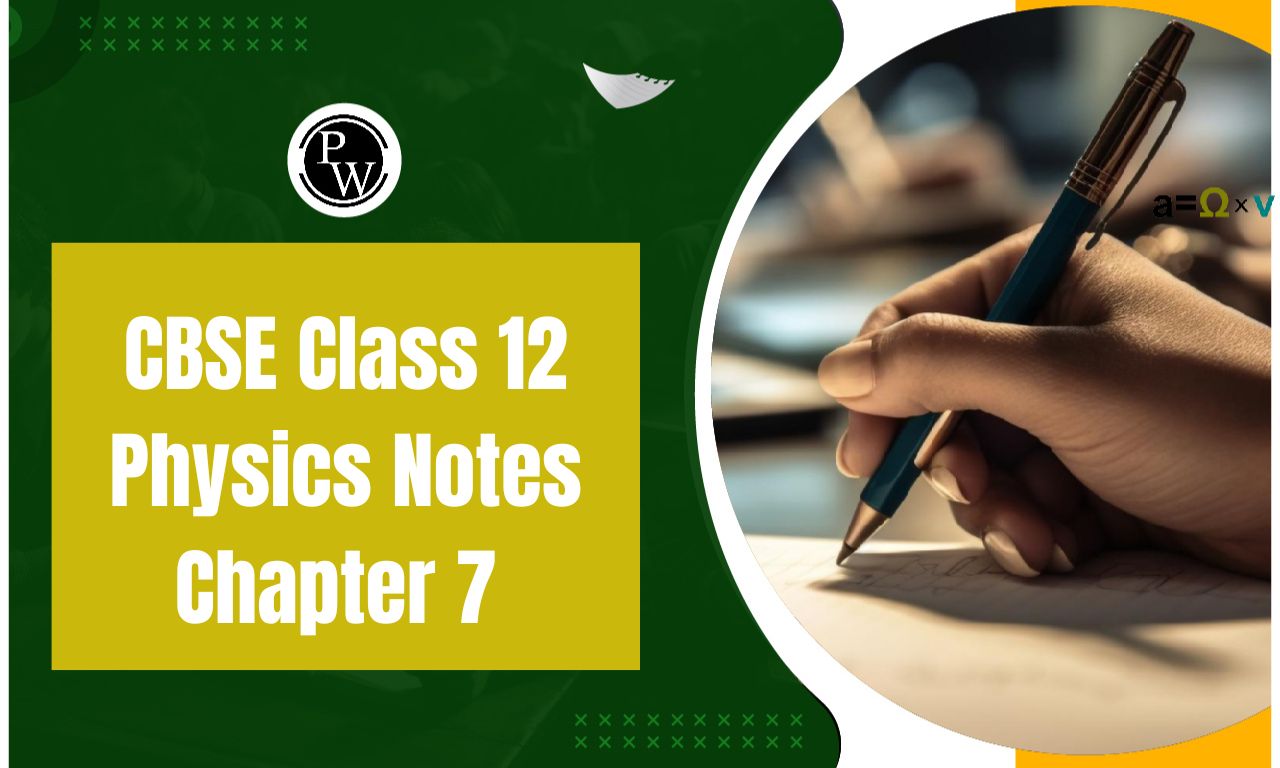
CBSE Class 12 Physics Notes Chapter 7: Chapter 7 of CBSE Class 12 Physics explores Alternating Current (AC) and Electromagnetic Waves. It covers the characteristics of AC, including peak value, frequency, RMS value, and phasors. The chapter discusses AC circuit analysis with resistors, inductors, and capacitors (R, L, C), focusing on concepts like reactance, impedance, resonance, and power factor.
The section on Electromagnetic Waves introduces their generation, properties, and the electromagnetic spectrum, along with Maxwell's equations that describe their behavior. This chapter emphasizes the role of electromagnetic waves in communication technologies.Books for Class 12 Preparation
CBSE Class 12 Physics Notes Chapter 7 Overview
CBSE Class 12 Physics Notes Chapter 7 PDF
Here we have provided CBSE Class 12 Physics Notes Chapter 7 Alternating Current and Electromagnetic Waves pdf for the ease of students so that they can download it and access it easily.CBSE Class 12 Physics Notes Chapter 7 PDF
CBSE Class 12 Physics Notes Chapter 7 Alternating Current and Electromagnetic Waves
Alternating current undergoes frequent reversals in direction and varies in magnitude over time. It is embodied by
Average Value of Alternating Current
The amount of steady current that would transport the same amount of charge through a circuit in the period of a half cycle (i.e., T/2) as is sent by the alternating current through the same circuit, in the same length of time, is known as the mean or average value of alternating current over any half cycle. Let's say that an alternating current is represented by I=I0sinωt in order to get the mean or average value.First of all A tiny quantity of charge is transmitted in a short period of time, dt, if the strength of the current is expected to stay constant.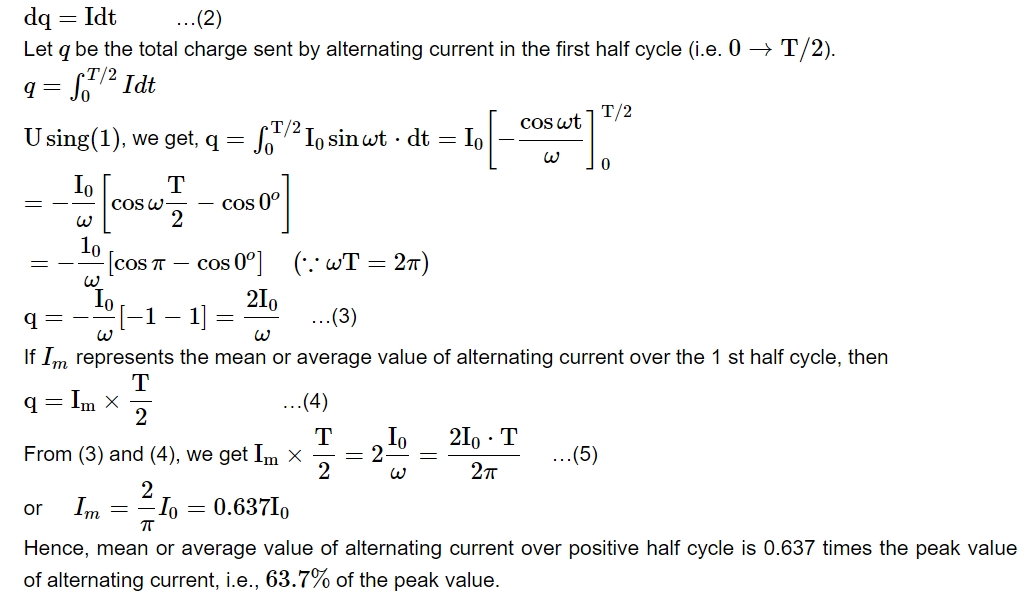
A.C. Circuit Containing Resistance Only
 This is the matured form of alternating current.
We may determine that resistance to a.c. is represented by R, which is the value of resistance to d.c., by comparing I0=E0/R with Ohm's law equation, which states that current = voltage/resistance. R can therefore diminish both a.c. and d.c. with equal effectiveness because his behaviour in both d.c. and a.c. circuits is the same.
We may determine that E and I are in phase by comparing (2) and (1). Consequently, as illustrated in figure, the voltage and current in an a.c. circuit with only R are in the same phase.
This is the matured form of alternating current.
We may determine that resistance to a.c. is represented by R, which is the value of resistance to d.c., by comparing I0=E0/R with Ohm's law equation, which states that current = voltage/resistance. R can therefore diminish both a.c. and d.c. with equal effectiveness because his behaviour in both d.c. and a.c. circuits is the same.
We may determine that E and I are in phase by comparing (2) and (1). Consequently, as illustrated in figure, the voltage and current in an a.c. circuit with only R are in the same phase.
Phasor Diagram

A.C. Circuit Containing Inductance Only
Only the alternating current I in an a.c. circuit with L lags one-fourth of a period—that is, a phase angle of 90 degrees—behind the alternating voltage E. On the other hand, there is a 90o phase angle where the voltage across L leads the current. Figure illustrates this. The vector diagram, also known as the phasor diagram, for the a.c. circuit with only L is shown in Figure (b). With respect to OX, the vector denoting E⃗ 0 forms an angle (ωt). Since current lags the e.m.f. by 90 degrees, the phasor for I⃗ 0 is rotated clockwise via 90 degrees from the direction of
A.C. Circuit Containing Capacitance Only
Let a capacitor with capacitance C only be linked to an alternating e.m.f. source (figure). Assume that the given alternating e.m.f. E is equal to E0sinωt}.... (1) The capacitor's plates receive charge from the circuit's current flow. A possible variation between the plates results from this. With each half-cycle, the current reverses and the capacitor is alternately charged and discharged. Assume q is the capacitor's charge at any given time t. Consequently, V=q/C is the potential difference across the capacitor's plates. The potential difference V needs to always equal the applied e.m.f., that is,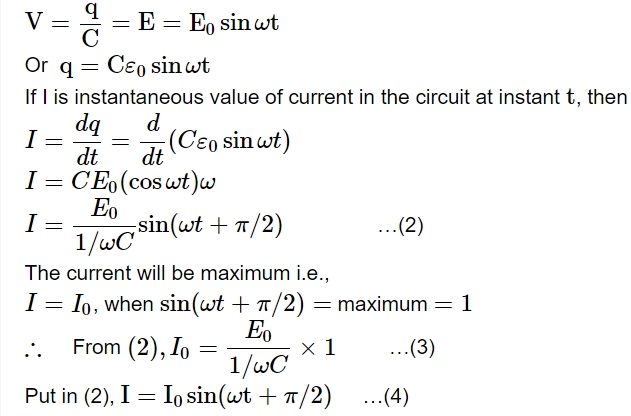 Similar to how resistance controls current in a purely resistive circuit, capacitative reactance does the same in a purely capacitative circuit. It is evident that capacitate reactance varies inversely with both the condenser's capacitance and the frequency of the alternating current.
Similar to how resistance controls current in a purely resistive circuit, capacitative reactance does the same in a purely capacitative circuit. It is evident that capacitate reactance varies inversely with both the condenser's capacitance and the frequency of the alternating current.

A.C. Circuit Containing Resistance, Inductance and Capacitance and Series
Phasor Treatment
Let a source of alternating e.m.f. figure be connected in series with a pure resistance R, a pure inductance L, and an ideal capacitance C capacitor. Since R, L, and C are connected in series, the amplitude and phase of the current flowing through the three elements are always the same. Let's use I=I0sinωt to express it.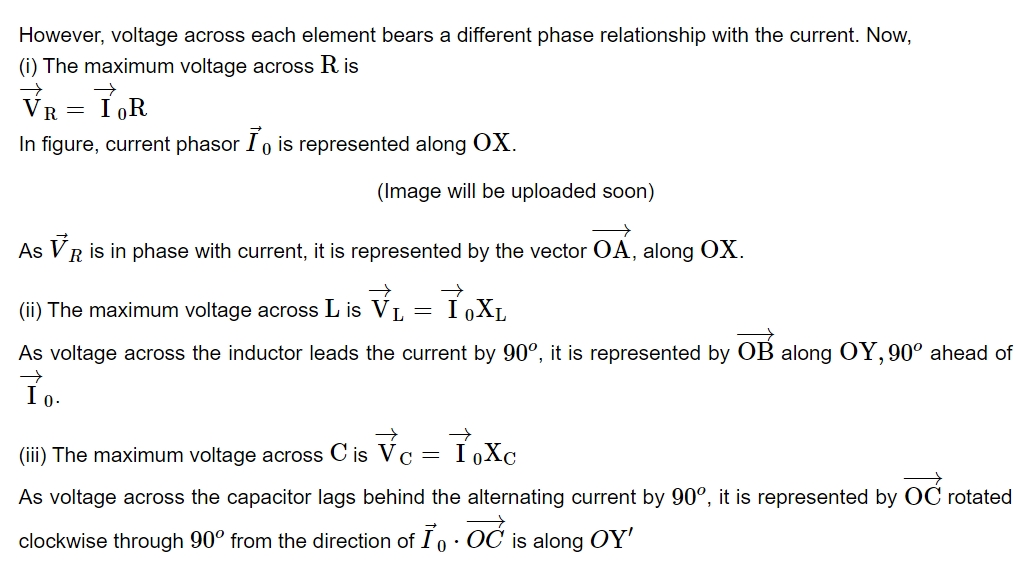
Analytical Treatment of RLC Series Circuit
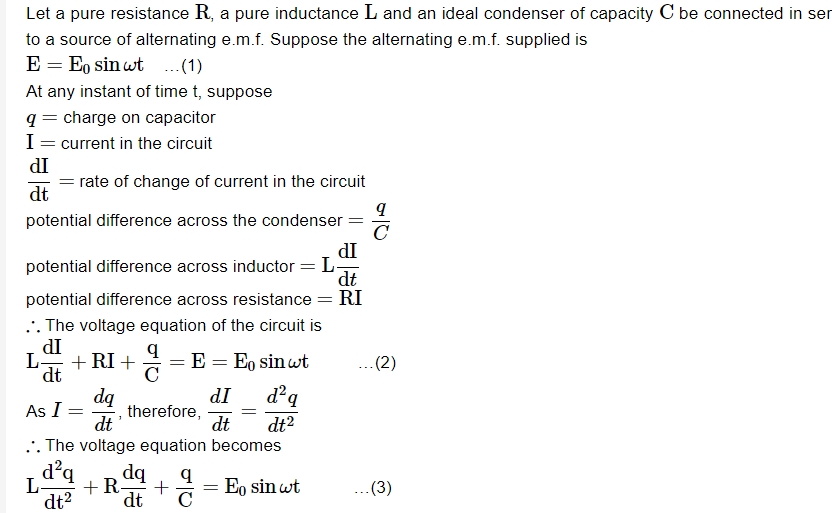


A.C. Circuit Containing Resistance & Inductance


A.C. Circuit Containing Resistance and Capacitance


Energy Stored in an Inductor

Electric Resonance
Series Resonance Circuit
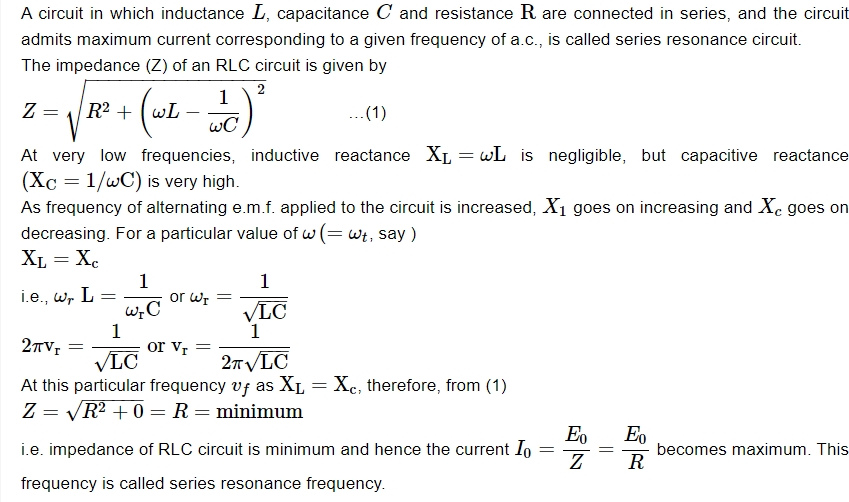
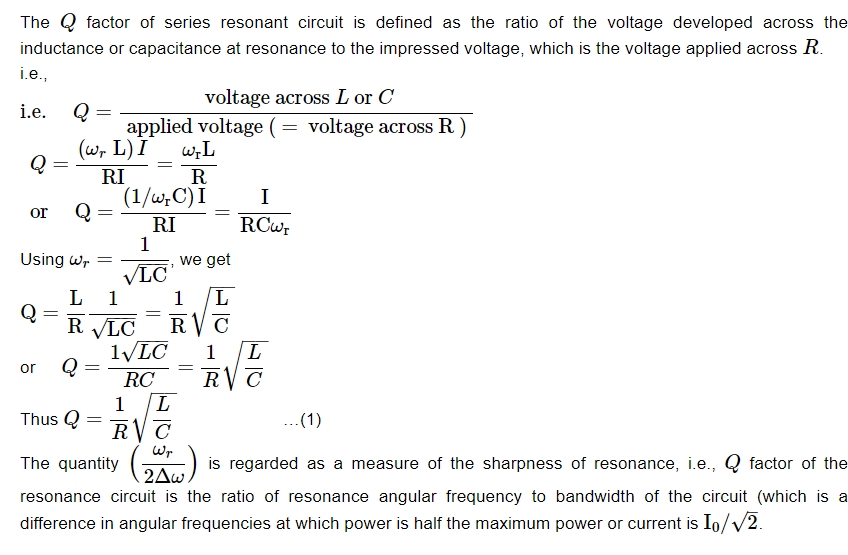
Average Power in RLC circuit or Inductive Circuit
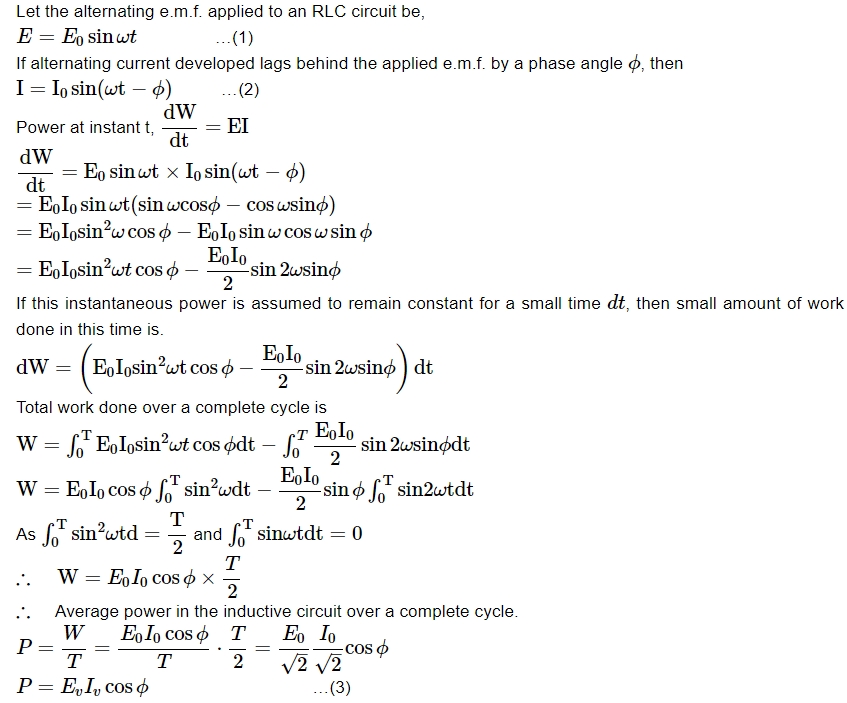
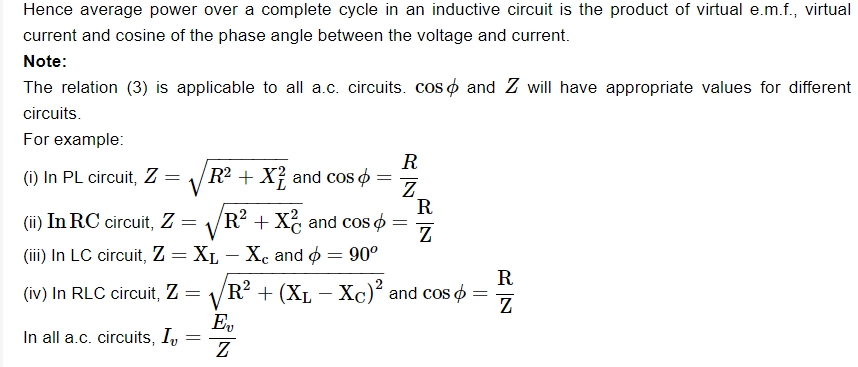
Power Factor of an A.C. Circuit
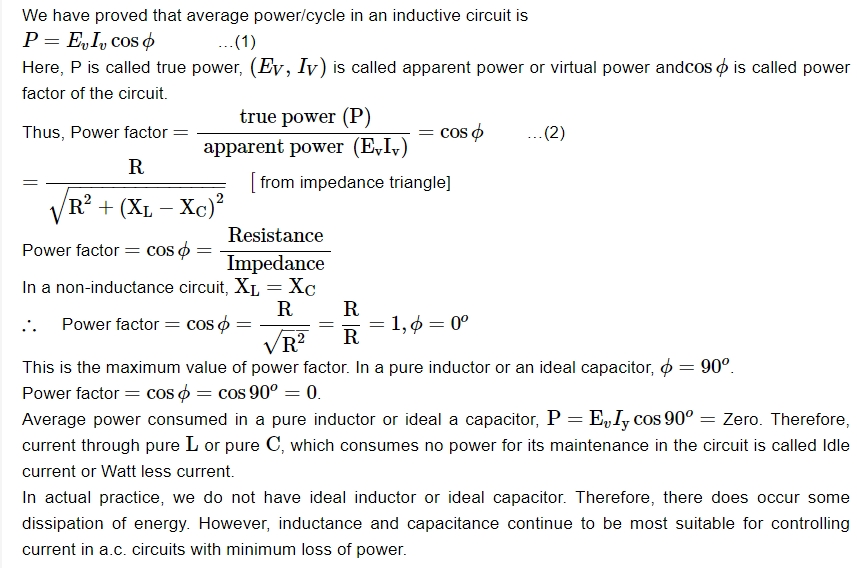
A.C. Generator or A.C. Dynamo
A device that converts mechanical energy into alternating current energy is called an a.c. generator/dynamo. It is among the most significant uses of the electromagnetic induction phenomena. Scientist Nikola Tesla, who was originally from Yugoslavia, created the generator. Since the machine doesn't produce anything, the term "generator" is misleading. It is actually an alternator that transforms one type of energy into another.Principle
The basis of an alternating current generator/dynamo is the electromagnetic induction phenomenon, which states that an e.m.f. is induced in a coil anytime the amount of magnetic flux associated with the coil varies. It lasts for however long there is a shift in the magnetic flux passing through the coil. The Fleming right-hand rule indicates the direction of the induced current.Construction
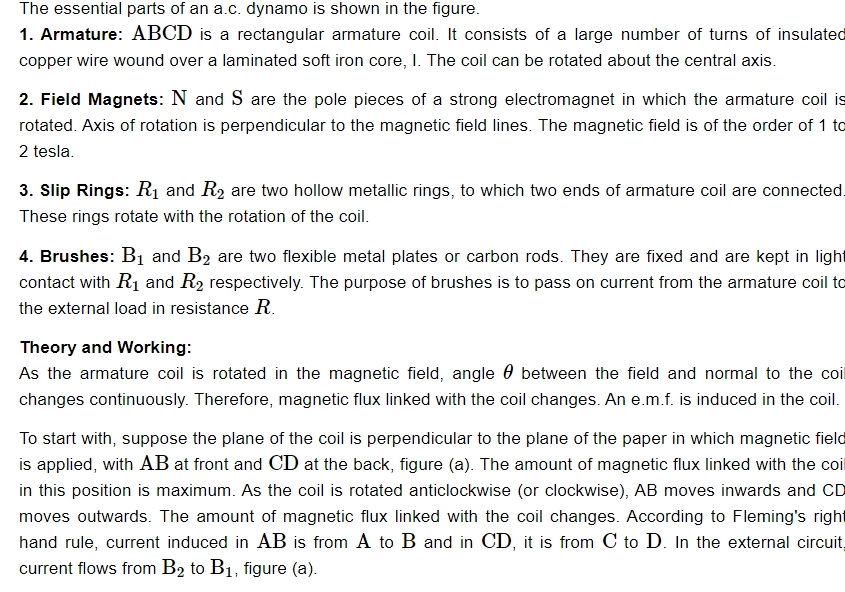
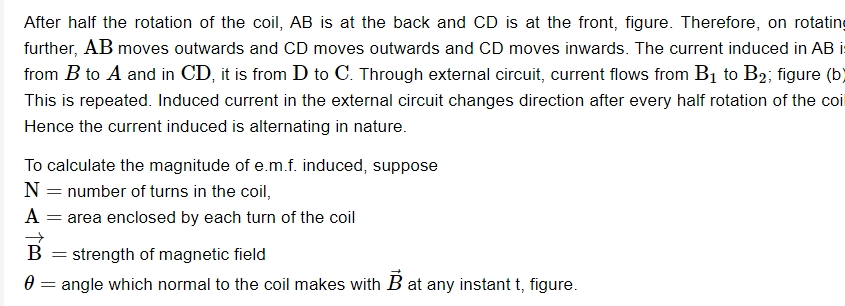
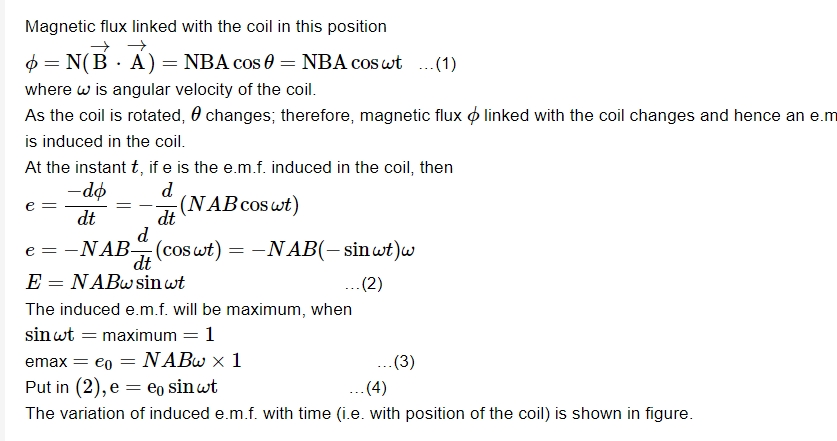
Read More - Simple Tips to Reduce Board Exam Stress and Study Like a Pro
Electromagnetic Spectrum
Numerous other electromagnetic waves were found by various means of stimulation following Hertz's experimental discovery of electromagnetic waves. The electromagnetic spectrum is the ordered arrangement of electromagnetic radiations based on their wavelength or frequency. Based on the type of excitation, the entire electromagnetic spectrum has been divided into several portions and subparts that are arranged in increasing wavelength order. Certain regions of the spectrum exhibit overlap, indicating that the corresponding radiations can be generated using two different techniques. It should be remembered that wavelengths, not methods of excitation, determine the physical characteristics of electromagnetic waves.Main Parts of Electromagnetic Spectrum
The electromagnetic spectrum has been broadly classified into following main parts; mentioned below in the order of increasing frequency.
Radiowaves
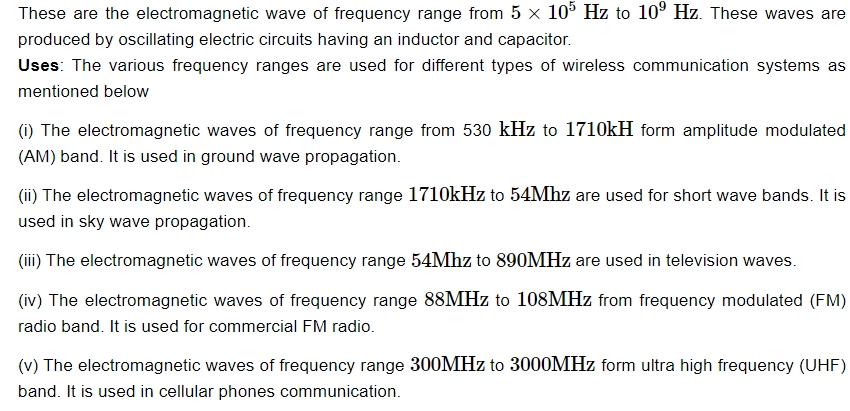
Benefits of CBSE Class 12 Physics Notes Chapter 7
The CBSE Class 12 Physics notes for Chapter 7 on Alternating Current and Electromagnetic Waves offer several benefits:Conceptual Clarity : The notes help students understand complex concepts like AC circuits, reactance, impedance, resonance, and electromagnetic waves, making it easier to grasp the subject matter.
Exam Preparation : Well-structured notes focus on key points and formulas, aiding in efficient revision and preparation for board exams and competitive exams like JEE and NEET.
Problem-Solving Skills : The notes include explanations of how to solve problems related to AC circuits and electromagnetic waves, enhancing students' analytical and problem-solving abilities.
Quick Revision : Summarized content allows for quick revision before exams, helping students recall essential concepts and formulas.
Application-Oriented Learning : The notes highlight the real-world applications of alternating current and electromagnetic waves, linking theoretical concepts to practical uses, especially in communication technologies.
Time Management : Concise notes save time by presenting information in a clear and organized manner, allowing students to cover more topics in less time.
CBSE Class 12 Physics Notes Chapter 7 FAQs
Is alternating current an easy chapter?
What is alternating current class 12 key points?
Which chapter should I study before alternating current class 12?
What are the uses of electromagnetic waves Class 12 notes?




